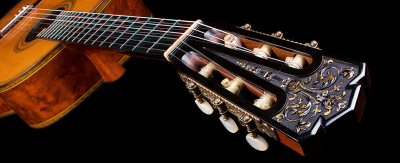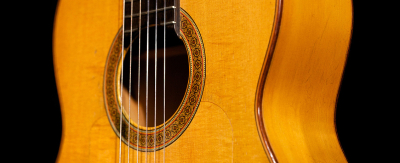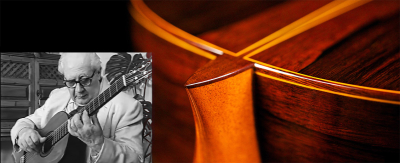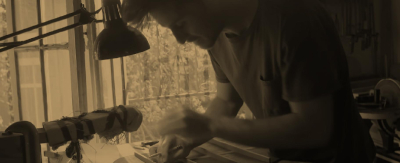GuitArchitecture - On Practice, Part 2
Here’s Part 2 of Scott’s article on practicing and muscle memory. The part about posture won’t apply to most of us classical and flamenco types, but the muscle memory part will.
Proper Posture Is Required For Proper Performance – Practicing Part II
In the last post, I had talked about some of the pre-requisites for setting up to practice. While I want to discuss specific issues with proper picking and fretting hand techniques, it’s important to address how the actual guitar is positioned when playing.
When practicing, it is imperative to practice the same way consistently so that performance is consistent.
A key component of this is posture.
First, a brief anecdote. When I started playing guitar, I didn’t pay a lot of attention to how I was practicing or how I was holding the guitar. I just paid attention to whether or not I was getting the notes out (more on what’s wrong with this in future posts). What I started noticing was that my live playing was really inconsistent. Sometimes the solos I practiced came out fine and sometimes they were really sloppy. I thought that maybe it was nerves or adrenaline. But after reading a lot of books on performance I was introduced to the concept of “muscle memory”, and realized that my problem was really rooted in muscle memory.
For those of you who have never heard of this term, when performing repetitive tasks synapses actually rewire themselves in your brain to short cut the mental processing behind the activity. This is known as “muscle memory”. Muscle memory is different from your dad’s memory of where he might have set his car keys down, and more like words carved in stone. On the plus side – if you’re doing things correctly – you don’t have to worry about it – but on the minus side if you have to fix something that’s ingrained in muscle memory – it takes a lot of effort to erase them.
Here’s an example that illustrates this idea. If I am walking and need to tie my shoe lace – “tie my shoe” is a short cut for the following steps (or some variation):
- Notice my shoe is untied
- Stop walking
- Bend down
- Grab one lace per hand
- Cross laces to opposite sides of shoe in an x shape
- Tuck one lace under another
- Pull laces taught
- Move laces in opposite direction
- Make a loop with the first lace (i.e. “bunny ears.”)
- Cross one “ear” over the other, in the opposite order of your overhand knot.
- Bend one loop over the other
- Pass the tip of the bent ear through the hole
- Pull the loops tight
- Double knot if need be
Once you’ve mastered this skill, you probably don’t put any thought into it at all. You could easily have a conversation and do it at the same time. A complex list of processes have been broken down into a single mental shortcut in this case called “tie my shoe”.
In music, muscle memory works the same way. If you play a lick over and over again the same way your brain actually rewires itself so that the numerous physical events that go into playing “lick #7” in your brain just becomes a mental shortcut called “lick #7”.
In my first person anecdote above, because my playing position varied between sitting, standing, squatting and lying down – I wasn’t developing proper muscle memory. Instead of learning one lick – my brain was trying to learn how to play that idea in a variety of contexts. This sounds small – but if you’ve ever been in a situation where you weren’t able to nail a part you normally can – you know what I’m referring to here.
The Solution?
My solution came in the form of a guitar strap.
Some people do not use guitar straps. In playing steel string guitar, I believe that a guitar strap is every bit as important as a guitar string. Again,this is because if your hands are not in the same position when you practice as when you perform – you will not have proper muscle memory – and the chances of flubbing notes goes up dramatically.
The key to using a guitar strap is to make sure that the guitar sits on your frame the same way when you stand as when you sit.
Note: You may be asking. Well – what about nylon string guitars? While it’s pretty rare to see nylon string guitarists use a strap, if you see a number of players you’ll notice that the majority of the good ones have very consistent posture. Posture is a big part of the classical pedagogical tradition and while flamenco guitar posture may be unorthodox with regards to the classical tradition, it is most definitely a consistent posture.
This is not to say that muscle memory isn’t flexible. You don’t have to have your hands in exactly the same position or expect total failure. If you’re playing live and you move around – your body will typically adapt to what’s going on and accommodate you. If you like to practice sitting – most people so unless they’re practicing with a band – having a consistent instrument position will help you perform more consistently when you stand – which is likely how you are going to perform unless you’re used to performing when sitting down.
Give it a try. When practicing – just try adjusting your strap differently when you sit or when you stand and see if makes a difference over a couple of weeks. You might be surprised.
In the next post – I’ll start the long process of addressing left and right hand placement, tension and the thumb – i.e. some common sense “secrets” that evade a lot of teachers and students.
© Scott Collins – All Rights reserved – used here with permission.
1 comment







